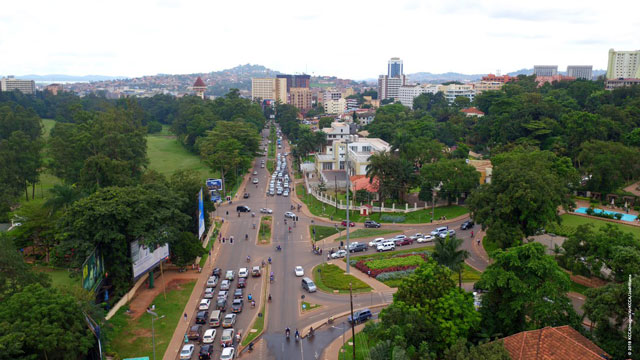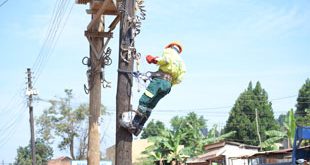
Why every modern asset should be respected for its functionality and not merely its symbolism
THE LAST WORD | ANDREW MWENDA | Whatever its critics say, capitalism remains the most consequential system (and ideology) of organising human affairs in history. Born in Western Europe, it has spread across the world, as Karl Marx predicted, through the continual process of destruction and replacement of precapitalist social structures. Except for North Korea that is holding out against its power and allure, the rest of the world is hooked onto capitalism – including Cuba that is now embracing it, albeit slowly. Of course, in many parts of the world, some traditional structures have proved obdurate.
Capitalism, as a system and as an ideology, seeks to rely largely (not entirely) on private enterprise and the “market” to organise human affairs. Of course, it has variants: there is a difference between the hyper-capitalism of the USA, the social democratic capitalism of Sweden, the state capitalism of China and the anarcho-capitalism of South Sudan. These differences have been necessitated by history, culture and circumstances but they remain different strands of the same system and ideology.
Although capitalism initially spread through Western Europe’s military conquest of other parts of the world, its most powerful force has been it as a religious crusade – “modernisation” or “development”. Even its critics in socialism and communism accepted modernisation as a universal goal.
Modernisation i.e. the process of becoming “modern” does not follow a linear path as some of its secular priests from the Western world tend to think. But as a program of action and normative goal, modernisation (or development) has no competing alternative. Even Christianity and Islam’s religious goal of universal emancipation do not come close.
This preamble brings us to the subject of our discussion today: the pursuit of modernisation in Uganda. The state of Uganda, like every state in every “not so modern” society, is organised around becoming modern.
To be modern is to look like “the West” – a term that refers to Western Europe and her offshoots in North America and Oceania (Australia and New Zeeland).
We admire Asian countries such as Singapore, South Korea, Japan, Taiwan and now China because they have caught up (for China is rapidly catching up) with the West in terms of becoming modern. So, modernisation is a Western form to which we all aspire.
But like all neophytes, Uganda’s pursuit of modernisation often takes the form and ignores the substance. In many aspects we behave like some of the subjects of the ancient Roman empire.
The Roman historian, Suetonius, writes of leaders of some barbarian tribes that had just been admitted to the Roman Yoke. Appointed as chiefs, they would try to copy and ape the practices of Roman aristocrats in such a crude and crass way, missing the purpose and nuances of Roman aristocratic practice.
Yet my critique is not about the behavior and practices of Uganda’s upper and middle classes in aping western ways. I leave that to Timothy Kalyegira. I am interested in the institutional practices of the state.
One area of interest is Kampala’s traffic lights. The idea behind traffic lights is to regulate traffic flow in order to make it smooth, reduce congestion and cars getting into each other’s way. In Uganda, our traffic lights are, at heart, not meant to perform this function. They are on the streets as symbols of modernity.
To be a modern city is to have streets with traffic lights. Over months of observation and close study, I have discovered that this pursuit of a “modern look” in Kampala is done without due consideration to its effect on traffic flow. Traffic lights are put in place and timed, not to really effectively regulate and smoothen traffic flow, but as decorations of modernity – to make Kampala look a modern city. Even in places where they actually undermine the smooth flow of traffic, like most parts of Acacia Avenue, Kampala Capital City Authority (KCCA) tenaciously holds onto them.
I once invited the chiefs of traffic police in Kampala and the head of traffic signals at KCCA to observe the effects of traffic lights on traffic flow. We spent three days standing at different spots to see how the lights work. The traffic entering Upper Kololo Terrace from Wampewo Avenue was given 20 seconds. When lights went green, only four to six cars would move before they went red again. Yet behind them, more than 15 vehicles would have arrived. Within a few minutes a long queue would form on Wampewo Avenue even when York Terrace and Upper Kololo Terrace had little traffic.
We did these observations along Lugogo Bypass, Acacia Avenue, Kiira Road to Bukoto lights, Ntinda to Nakawa etc. and the results were the same. Traffic signals were not responding to traffic volume, especially during peak hours. At Kiira Road Police Station, traffic is most heavy in the morning for cars coming from Ntinda going to town. But the lights were timed only 30 seconds, and would clear less than 30% of the cars arriving while other roads on the junction would be empty. In the evening, the traffic volume changes to cars coming from Lugogo Bypass going to Bukoto and the same problem of poorly timed lights was there.
One day we did an experiment and switched off the lights along acacia avenue after 10am till 4pm and the traffic flow was totally smooth. Then I asked why don’t we do it daily if the traffic lights are acting as an obstruction to the smooth flow of traffic. The traffic police officers shared my sentiment but KCCA has an agreement with the funders to keep the lights on. Here it is not the functionality of a modern asset that is respected but its symbolism. These days and at every major traffic spot, to clear traffic during peak hours, traffic police officers stand in the middle of the road and disregard lights and move the traffic themselves – and it works.
KCCA can solve this problem by installing smart lights that have sensors for traffic volume and therefore go green or red in response to reality. Such an investment does not not need money from government. We can get an investor to the install technology and use it for ticketing offenders. The resultant traffic fines would be more than enough for the investor to recoup his investment with a handsome profit and even give a good share of revenue to the state. I am very critical of Ugandan intellectuals who think our country can become Singapore overnight. But some of the criticism of the state in Uganda is legitimate – this reform is within our capacity to implement. This is a challenge to democratic theory: why does an elected government fail to respond to the problems faced by its voters?
*****
amwenda@independent.co.ug
 The Independent Uganda: You get the Truth we Pay the Price
The Independent Uganda: You get the Truth we Pay the Price




1.Traffic jam in Kampala can only be resolved by building Sky or underground trains because the only available space in Kampala is either in the sky or underground.
2,Every good practice is as a result of implementing successful reforms from other Nations.So far the Western nations have proved that their works are good and worth implementing.
3.When you blend the works of the M7 and Obote’s reign of the 1960’s you just burst into tears of joy.The World is still overwhelmed with M7’s rapid economic reforms;thats why he is so protective of Uganda.
4.Traffic lights are good just like Andrew has suggested they can be reprograammed but in Kampala its like road users like the Boda riders are above the law every corner of town has a VIP motorcade interrupting and disregarding the traffic lights signs.During the London Olympics the traffic lights were reprogrammed to enable the athletes and VIPs access the venue in time.
If Uganda is going to build roads in the sky…then Uganda would be ordering for specialized aliferous cars….I hope Winnie is not riding on heroin. Instead we could be talking of overground/overland….is she on wool gathering
What a joke this NRM bootlicker tells people.
Yes traffic lights are worthy looking at in the grand scheme of things when a country is chasing development. Firstly, he looks at the problems of development from top down (I will come back to that and what I mean ) . Secondly, he identifies a problem and apart from calling out the traffic officer to come and see , he offers no solutions to how traffic problems can be addressed in Kampala.
This is the man who advocates for the government doing nothing – whether working on providing employment or a conducive environment for employing the young people ; governments to him have no responsibility for putting in place policies or initiatives to cushion people against the current spiralling costs of living ; government should encourage corruption ; the government is not required to provide a universal health care system ; government should collect taxes from the poor and fatten those at high table and then send them abroad for treatment when they fall sick from their excessive indulgencies etc….
Mr Mwenda, economics from a layman’s world , you need the following to grow the economy and wealth amongst the people
– investment in man areas that provide employment and earnings . For Uganda – all forms of agricultural activities as more than 60% of the people are employed in this area.
– Education. Good schools , teachers and scholastic materials made available to both teachers and students. Education has been neglected by this government you support. Go to the government schools and see for yourself Mwenda. Start with your old schools.
– Have robust and effective systems in place to fight corruption . This is an area that both yourself and M7 do not agree with.
– Develop and maintain a good , safe and secure transport network ranging from roads, railways, tram links , air travel [ Apart from poor Roads system, NRM has done nothing in this area. They Plundered the railway system and sold off the Railway Land]
– etc…….
Stop the gimmicks this government has been indulging in which they have used to steal and plunder the coffers. The country has had a wasted 36 years and counting.
We should be brave and admit the fact that Kampala and most of our cities are village towns application of any urban touches requires sophiscation that can only be axheived by planners that have had lengthy exposure to basic urban facilities.
I think it is only Jinja, Mbale and Gulu towns that can respond to modernity if the economy was following a development trajectory.
Thank you